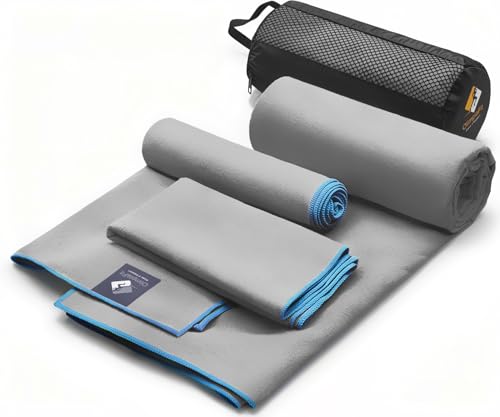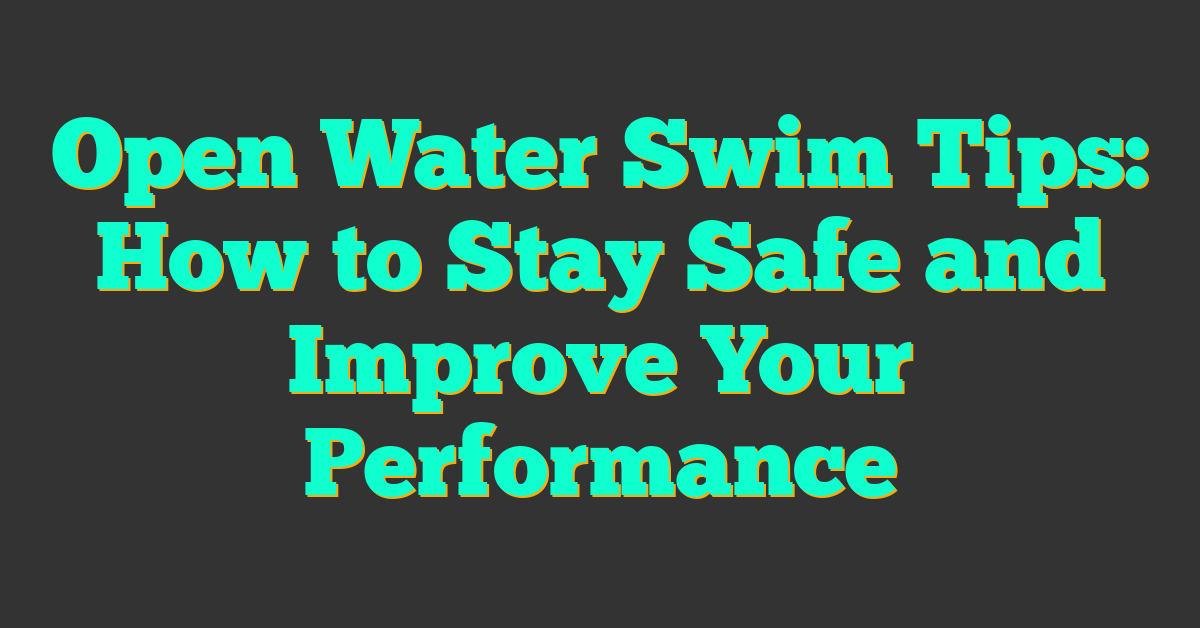If you’re interested in participating in a triathlon but don’t feel confident in your swimming abilities, you might be wondering if it’s possible to complete a triathlon without swimming. The answer is yes, it is possible. While swimming is a fundamental component of the triathlon, there are alternatives that can allow you to participate in the event without swimming.

A triathlon is a multi-discipline endurance event that involves swimming, cycling, and running. The swim is the first leg of the event and is followed by the cycling and running legs. However, there are events that are similar to triathlons but do not require swimming. These events are called duathlons and consist of a run-bike-run format. Duathlons are a great option for those who want to participate in a multi-discipline endurance event without swimming.
Key Takeaways
- You can participate in a triathlon without swimming by participating in a duathlon.
- Duathlons consist of a run-bike-run format and are similar to triathlons but do not require swimming.
- Duathlons are a great option for those who want to participate in a multi-discipline endurance event without swimming.
Understanding Triathlons
If you’re new to triathlons, it can be intimidating to know where to start. A triathlon is a race that combines three different disciplines: swimming, cycling, and running. Triathlons can vary in distance, with the most common being Sprint, Olympic, Half-Ironman, and Ironman.

Race Distances
Here’s a breakdown of the different triathlon distances:
- Super Sprint: 400m swim, 10km bike, 2.5km run
- Sprint: 750m swim, 20km bike, 5km run
- Olympic: 1.5km swim, 40km bike, 10km run
- Half-Ironman: 1.9km swim, 90km bike, 21.1km run
- Ironman: 3.8km swim, 180km bike, 42.2km run
As you can see, the distances can vary greatly, with Ironman being the most challenging. If you’re new to triathlons, it’s recommended to start with a Sprint or Super Sprint distance.
Sprint Triathlon
A Sprint triathlon is a great starting point for beginners. It’s a shorter distance, but still challenging enough to give you a taste of what a triathlon is all about. The swim is typically 750m, which can be daunting if you’re not a strong swimmer. However, with practice and training, you can improve your swimming technique and build up your endurance.
Iron-distance
If you’re up for a real challenge, the Iron-distance triathlon is the ultimate test of endurance. It’s a grueling race that requires months of training and preparation. The distances are much longer than a Sprint triathlon, with a 3.8km swim, 180km bike ride, and a full marathon (42.2km) run.
In conclusion, triathlons can be a fun and rewarding way to challenge yourself physically and mentally. With the right training and preparation, you can complete a triathlon without swimming. However, it’s important to start with a shorter distance and work your way up to longer distances.
Triathlon Without Swimming
If you’re not comfortable with swimming, don’t worry! You can still participate in a triathlon without swimming. There are several options available to you.
Duathlon
A duathlon is a two-stage race that consists of running and cycling. It’s a great option for those who don’t want to swim. The distances vary depending on the event, but the most common distances are a 5K run, a 20K bike ride, and another 5K run. If you’re a beginner, you can start with a shorter distance.
Aquathlon
An aquathlon is a two-stage race that consists of swimming and running. It’s a great option for those who are comfortable with running but not swimming. The distances vary depending on the event, but the most common distances are a 1K swim and a 5K run. If you’re a beginner, you can start with a shorter distance.
Kayak
If you’re not comfortable with swimming, you can also participate in a triathlon by kayaking instead. The kayak leg replaces the swim leg of the race. The distances vary depending on the event, but the most common distances are a 2K kayak, a 20K bike ride, and a 5K run.
In summary, if you’re not comfortable with swimming, there are still options available to you. You can participate in a duathlon, aquathlon, or kayak triathlon. Choose the option that works best for you and have fun!
Training for the Race
If you’re considering participating in a triathlon but are worried about the swimming portion, you’ll be happy to know that it is possible to complete a triathlon without swimming. However, you will need to put in the effort to train for the other two legs of the race: running and biking.
To start your training, it’s important to set realistic goals and develop a training plan that fits your fitness level. A coach or personal trainer can help you create a plan that will help you build endurance, increase your speed, and improve your overall fitness.
When it comes to running, it’s important to start slowly and gradually increase your distance and speed. Incorporating interval training and hill workouts can also help you build strength and endurance. Rest days are just as important as training days, so be sure to give your body time to recover.
For biking, you’ll need to invest in a good quality bike and helmet. Like running, it’s important to start with shorter distances and gradually increase your mileage. Hill workouts and interval training can also help you build strength and endurance on the bike.
Pacing yourself during the race is also important. You don’t want to burn out too quickly during the running or biking portion of the race. By starting slow and gradually increasing your pace, you’ll be able to conserve energy for the entire race.
In summary, while you can complete a triathlon without swimming, you’ll need to put in the effort to train for the running and biking portions of the race. Developing a training plan, building endurance, and pacing yourself during the race are all important factors to consider. With dedication and hard work, you can cross the finish line and achieve your triathlon goals.
Equipment Essentials
When it comes to completing a triathlon without swimming, you’ll need to make sure you have the right equipment. Here are some essential items you should consider:
Bike
A road bike is the most common type of bike used in triathlons. It’s important to choose a bike that fits you well and is comfortable to ride for long distances. You can also consider adding aero bars to your bike to help you ride more efficiently.
Wetsuit
While a wetsuit is not necessary for a triathlon without swimming, it can help keep you warm during the swim portion. If you choose to wear a wetsuit, make sure it fits properly and is comfortable to wear.
Swim Portion
« Biggest Triathlons in the United States: A Guide to the Most Popular Races
Best Gear for Triathletes: A Comprehensive Guide to Top-Performing Equipment »
Since you won’t be swimming, you won’t need a swimsuit or swim cap. However, it’s still important to be prepared for the swim portion. You should practice open-water swimming techniques and specific endurance training.
Transitions
Transitions are an important part of any triathlon. Make sure you have everything you need for each transition, including a towel, water, and any necessary equipment.
Overall, completing a triathlon without swimming requires a different set of equipment essentials than a traditional triathlon. Make sure you have everything you need to feel comfortable and confident during the race.
Nutrition and Recovery
When it comes to completing a triathlon without swimming, proper nutrition and recovery are key. You need to fuel your body with the right nutrients to have the energy to complete the race and take care of yourself after the race to prevent injury and promote recovery.
To ensure that you have enough energy to complete the triathlon, you should consume 30-60 grams of carbohydrates per hour of exercise. For events lasting more than 2 ½ hours, up to 60-90 grams per hour may be sufficient. You can get your carbohydrates from sources such as sports drinks, energy gels, or energy bars.
In addition to carbohydrates, you should also consume protein to help repair and rebuild your muscles after the race. Aim to take on 1.4-1.6 grams of protein per kilogram of body weight per day. This equates to roughly 100-115 grams of protein for a 160-pound athlete or 75-85 grams for a 120-pound athlete. Good sources of protein include lean meats, fish, eggs, and dairy products.
Don’t forget to stay hydrated before, during, and after the race. Drink water or sports drinks to replace fluids lost through sweat. You can also consume electrolyte supplements to help maintain the balance of electrolytes in your body.
Finally, make sure to prioritize recovery after the race. Take time to rest and allow your body to recover. You can also try techniques such as foam rolling, stretching, and massage to help promote recovery and prevent injury. By taking care of your body, you can complete a triathlon without swimming and feel great afterward.
Race Day Preparation
Congratulations! You’ve made it to race day and you’re ready to complete a triathlon without swimming. Here are some tips to help you prepare for the big day.
Before the Race
First things first, make sure you enter the race as a participant who will not be swimming. This will ensure that race officials are aware of your situation and can make accommodations for you.
Next, make sure you have all the necessary gear for the bike and run portions of the race. This includes a bike, helmet, running shoes, and any other gear you may need. Double-check that everything is in good working order and that you have everything you need.
T1 and T2
Transition areas can be hectic, so it’s important to be prepared. Make sure you know where your bike is located in the transition area and have a plan for getting in and out quickly. You can lay out your gear in a specific way to help save time. For example, you can put your running shoes and any other gear you need for the run in a separate bag or area so you can quickly change from your bike shoes.
Safety
Safety is always a top priority, so make sure you follow all race rules and regulations. If you’re not comfortable riding in a pack, stay towards the back of the group and give yourself plenty of space. It’s also important to stay hydrated and fuel properly throughout the race to avoid any health issues.
In conclusion, completing a triathlon without swimming is definitely possible with the right preparation and mindset. By following these tips, you’ll be well on your way to a successful race day. Good luck!
Choosing the Right Event

If you’re not a swimmer, choosing the right triathlon event is crucial. There are several race distances to choose from, and some of them don’t require swimming at all.
The most popular triathlon distance is the sprint triathlon. It typically consists of a 750-meter swim, a 20-kilometer bike ride, and a 5-kilometer run. However, if you’re not comfortable with swimming, you can opt for a duathlon instead. A duathlon is a run-bike-run event that eliminates the swimming portion of the race.
If you’re looking for a longer distance, you can try the Olympic distance triathlon. It consists of a 1.5-kilometer swim, a 40-kilometer bike ride, and a 10-kilometer run. However, if you’re not ready for the swim, you can look for an Olympic distance duathlon instead.
For those who are up for a challenge, there are half-iron and full-iron triathlons. The half-iron, also known as the 70.3, consists of a 1.2-mile swim, a 56-mile bike ride, and a 13.1-mile run. The full-iron, also known as the Ironman, consists of a 2.4-mile swim, a 112-mile bike ride, and a 26.2-mile run. These races require significant training and preparation, but they also offer a great sense of accomplishment.
When choosing a race, consider the location as well. North America hosts several triathlon events throughout the year, including the Ironman World Championship in Hawaii. However, there are also plenty of triathlons in other parts of the world, such as Europe and Asia.
In summary, choosing the right triathlon event can make all the difference, especially if you’re not comfortable with swimming. Consider the race distances, location, and whether or not you want to participate in a duathlon. With the right preparation, you can complete a triathlon without swimming and achieve your goals.
Cost and Commitment
When it comes to triathlons, the cost and commitment can vary depending on your level of involvement and experience. If you’re a beginner, you might be wondering how much it’ll cost to complete a triathlon without swimming.
First, let’s talk about the cost of equipment. You’ll need a bike, helmet, running shoes, and appropriate clothes for each leg of the race. You might also need a wetsuit if the swim portion is in open water. If you’re on a budget, you can find used equipment or borrow from friends. Keep in mind that some races might require specific gear, so be sure to check the race rules beforehand.
Next, let’s talk about training. If you’re new to triathlons, you’ll need to commit time to train for each leg of the race. This might mean joining a gym, finding a running or cycling group, or hiring a coach. You’ll also need to practice transitioning from one leg to the next, which can be time-consuming.
Overall, the cost and commitment of completing a triathlon without swimming can be manageable if you’re willing to put in the time and effort. Remember to budget for equipment, training, and race fees, and don’t be afraid to ask for help or advice from experienced triathletes.
Improving Your Technique
If you’re planning to complete a triathlon without swimming, it’s essential to work on improving your technique in the other two disciplines – running and biking. Improving your technique can help you conserve energy, reduce the risk of injury, and ultimately perform better on race day.
Running Technique
When it comes to running, proper technique can help you run faster and more efficiently. Here are some tips to improve your running technique:
- Keep your body relaxed and upright
- Land on the midfoot or forefoot
- Take short, quick steps
- Swing your arms naturally
- Lean forward slightly from the ankles
Biking Technique
Biking is another critical discipline in triathlons. Proper technique can help you bike faster and more efficiently, allowing you to conserve energy for the other disciplines. Here are some tips to improve your biking technique:
- Maintain a steady cadence
- Keep your upper body relaxed
- Use your core to stabilize your body
- Keep your eyes focused on the road ahead
- Shift your weight to maintain balance and control
Improving your technique in both running and biking can help you perform better in a triathlon without swimming. Remember to focus on proper body position, breathing, and form to optimize your performance on race day.
Resources and Support

If you are a beginner or a novice swimmer, completing a triathlon without swimming might seem daunting. However, with the right resources and support, it is possible to achieve this feat.
The first step is to find a coach or a coaching program that can provide you with the necessary advice and support. A coach can help you build your fitness and teach you about the fundamentals of the pool. They can also help you progress from the pool to open water training.
Trifind is a great resource for finding coaches and coaching programs in your area. You can also use the Outside+ app to find coaches and training plans that are tailored to your needs and fitness level.
In addition to coaching, there are many online resources that can help you prepare for a triathlon without swimming. For example, the website Triathlon Inspires offers advice and tips for beginners who are looking to complete a triathlon without swimming.
Remember, completing a triathlon without swimming is not something that you should attempt on your own. It is important to seek out the advice and support of experienced coaches and trainers who can help you achieve your goals. With the right resources and support, you can complete a triathlon without swimming and achieve your fitness goals.
Frequently Asked Questions
What are the distances for a duathlon?
A duathlon is a multisport race that involves running and cycling. The distances for a duathlon vary depending on the race, but typically consist of a 5K run, followed by a 20K bike ride, and finish with another 5K run.
What is a sprint duathlon?
A sprint duathlon is a shorter version of a standard duathlon. The distances for a sprint duathlon are usually a 2.5K run, followed by a 10K bike ride, and finish with another 2.5K run.
What is a swimrun?
A swimrun is a multisport race that involves running and swimming. The race consists of multiple swim and run segments, with athletes wearing their running shoes and wetsuits throughout the entire race.
Is it possible to complete a triathlon without swimming?
Yes, it is possible to complete a triathlon without swimming. There are several variations of multisport races, including duathlons and aquabikes, that do not include a swimming component.
How can I train for a triathlon without access to a pool?
If you do not have access to a pool, you can still train for a triathlon by focusing on other aspects of the race, such as running and cycling. You can also incorporate swim-specific exercises, such as resistance band exercises or dry-land swim drills, to improve your swimming technique.
Do I have to freestyle in a triathlon?
No, you do not have to freestyle in a triathlon. While freestyle is the most common swimming stroke used in triathlons, you are allowed to use any stroke you prefer as long as you complete the required distance.










